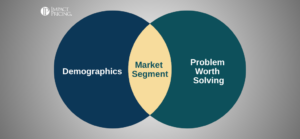Recently, I asked what people thought of price gouging and received many great comments on a post on LinkedIn. Although I had opinions going in, they were clarified and modified after reading all of those comments. Here is now what I think.
First let’s define gouging: Gouging is a short term dramatic increase in the price of a necessity to take advantage of a temporary imbalance where demand exceeds supply.
Notice this says necessity.
When hotel rooms on Super Bowl Sunday are 5 times the normal price, we don’t consider that gouging. But with the prices of hand sanitizing gel skyrocketing in the age of Corona virus, that feels like gouging.
The definition also says a temporary imbalance.
Gouging is normally perceived when there is a catastrophe, like a hurricane or a pandemic. Sometimes it’s caused by an increase in demand, like hand sanitizer. This may be driven by panic and fear, but whether or not it’s rational there is excess demand. It could also be caused by a decrease in supply, like not trucking in bottled water or other supplies when a hurricane is on the way.
Looking at the Impacts of Price Gouging from a Wider Perspective
There are three constituencies to consider when discussing gouging: the company, the customer, and society.
The Company
We often look at gouging and think it’s a greedy company trying to take advantage of a horrible situation. Customers tend to attribute higher prices to the profit maximizing objectives of the firm. That may or may not be the case.
The Customer
Customers see gouging as unfair. Remember, fairness is always in the mind of the beholder. As a general rule, companies shouldn’t want their customers to think of them as unfair, especially if they need to build a long term brand and customer base.
It certainly feels unfair when companies jack up prices for the purpose of making additional profit because of a catastrophe. But, there may be other circumstances. For example, what if they raise prices so they can increase supply. This is a benefit Uber claims to get from their surge pricing, more drivers in the busiest spots.
The Society
Imagine a company that has two production lines, hand sanitizers and salad dressing. The hand sanitizer line is running at full capacity trying but failing to meet demand. They could use their salad dressing line to make hand sanitizer, but it would cost them a lot in the changeover and the cost for each bottle would be much higher. In fact, their costs would be so high they would lose money at the going price for hand sanitizer. As a businessman, I would advise them to not do it. However, it would obviously be better for society if they did.
In this one case, gouging could be good. Companies aren’t profiting excessively, society is better off, but customers will still see it as gouging. Unless the company can communicate the purpose to the market. “We have to raise prices because our costs to produce these extra supplies are much higher.” Customers may still be angry, but probably a little less angry.
Companies Must Consider the Good & Bad of Price Gouging
Finally, we get to the advice for companies…
Don’t gouge!!! Your customers will hate you. Think about the long term impact on your business. Think about your brand. However, if you’d like to raise prices for the purpose of increasing supply, then make sure to scream that message loudly for all to hear. Be as open and transparent as possible.
I think there are definitely times when “gouging is good”, at least if you look at it from the social good perspective. But it’s probably very hard to implement in a way that looks fair to your customers. Be very careful.















